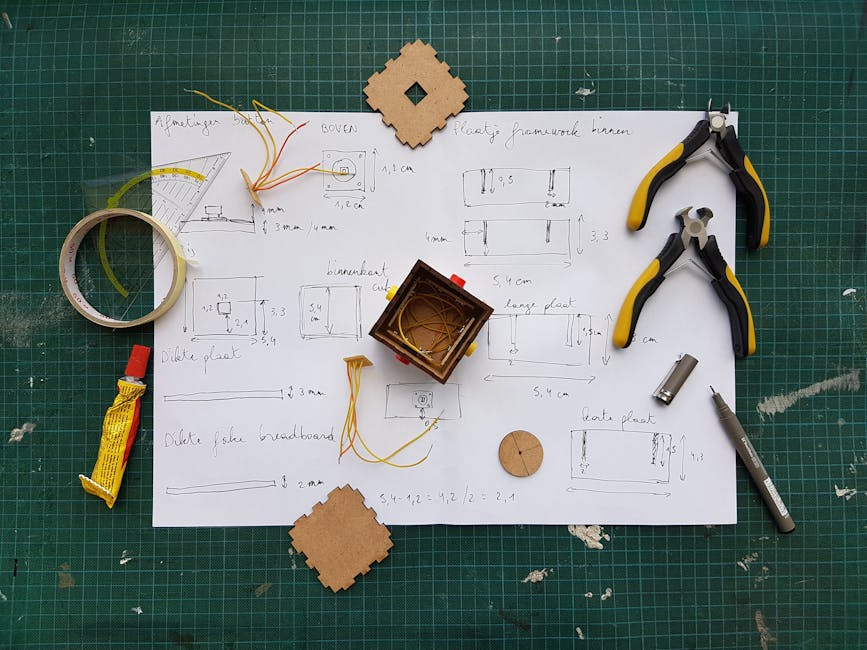Importance and Techniques of Creating Prototypes in Custom Software Development
In the domain of custom software development, prototypes reign supreme, guiding you through the turbulent seas of innovation and refinement. These shimmering beacons pave the way for steering user expectations and unravelling the mysteries of intricate design nuances with ease. By embracing the art of prototyping, you gain access to the power to sculpt masterpieces that resonate with your audience and stand the test of time. So, grasp hold of this invaluable tool, and let it be your compass in the vast sea of software creation. The journey has just begun, and the treasures of knowledge await.
Key Takeaways
- Prototyping aids in user feedback and iterative design for optimal software development.
- Various types of prototypes, like interactive and paper, reveal issues early on.
- Utilise innovative prototyping tools for simulating user experiences and enhancing development.
- Embrace iterative feedback and prioritise user experience for successful prototype refinement.
- Prototypes save time and resources by addressing issues early in the development process.
Significance of Prototyping

In the fast-paced world of custom software development, embracing the significance of prototyping is akin to donning a suit of armour before charging into battle – essential for survival and success.
Prototype testing and user feedback are your trusty sword and shield in this ever-evolving landscape of Agile development and iterative design. Picture this: you’re a knight in shining code, armed with a prototype that goes through rigorous testing, gathering feedback like a seasoned warrior collecting battle scars.
With prototyping, you aren’t blindly swinging your sword in the dark; instead, you’re meticulously crafting your approach, listening to the whispers of user feedback guiding your every move.
Agile development becomes your steed, carrying you swiftly through the iterative design process, ensuring you adapt and evolve with grace and precision.
Types of Prototypes

Envision yourself exploring the vast expanse of custom software development, where different types of prototypes serve as your versatile tools of innovation and testing.
Interactive prototypes, the fancy, high-tech siblings of the prototyping family, allow you to click, swipe, and experience a simulated version of your software before it even fully exists. They’re like the crystal balls of development, giving you a glimpse into the future user experience.
On the other end of the spectrum, we’ve the humble paper prototypes. Yes, you heard it right – paper. These low-fi wonders involve sketches, sticky notes, and a lot of imagination. They might sound outdated, but don’t be fooled; their simplicity can reveal complex issues early on, saving you from banging your head against the keyboard later.
Prototyping Tools

Picture yourself in the digital workshop, where your toolbox isn’t filled with hammers and nails but with an array of innovative prototyping tools waiting to bring your software vision to life. From mock-up designs that make your product visually pop to wireframe templates that lay the foundation for functionality, these tools are your magic wand in the domain of custom software development.
Collaborate seamlessly with team members using specialised collaboration tools that guaranty everyone is on the same page, literally.
Need to showcase your idea in action? Interactive demos are your go-to, allowing you to present a dynamic version of your software prototype that wows stakeholders and users alike. These tools not only streamline the development process but also add a touch of finesse to your presentations.
Best Practises

When exploring the domain of custom software development, adhering to savvy best practises is akin to wielding a well-honed compass in uncharted territories. In the world of prototypes, these practises are your trusty sidekicks, guiding you through the tumultuous waters of user experience and iterative feedback.
Here are three essential best practises to keep in mind:
-
Embrace Iterative Feedback:Think of your prototype as a fragile egg—handle it delicately and gather feedback continuously. Don’t wait until the end to reveal your creation; let users poke, prod, and critique along the way. After all, it’s easier to fix a cracked egg than a fully baked cake.
-
Prioritise User Experience:Just like a chef meticulously plates a dish, pay attention to how your prototype feels and functions. User experience isn’t just a buzzword; it’s the secret sauce that can elevate your prototype from mediocre to magnificent.
-
Iterate, Iterate, Iterate:Rome wasn’t built in a day, and neither should your prototype. Keep refining, tweaking, and polishing until your creation shines brighter than a diamond in the rough. Remember, the journey to a flawless prototype is paved with many iterations.
Benefits of Prototyping

Imagine prototypes as your golden ticket to accessing a treasure trove of benefits in the domain of custom software development. These mock-ups aren’t just pretty faces; they serve a purpose beyond mere aesthetics.
Envision this: you can conduct user testing with prototypes, allowing you to gather valuable insights and feedback before investing time and resources into the actual development phase. It’s like having a crystal ball that shows you potential pitfalls and opportunities, guiding you towards a more refined end product.
Moreover, prototypes support an iterative design approach, enabling you to make changes on the fly and refine your software incrementally. Gone are the days of waiting until the eleventh hour to realise a fatal flaw in your design. With prototypes, you can nip issues in the bud and save yourself from future headaches.
Conclusion
To sum up, prototyping is crucial in custom software development to guaranty the final product meets the client’s needs and expectations.
By creating prototypes, developers can gather feedback early on, make necessary adjustments, and avoid costly revisions later in the process.
For instance, a software company saved time and money by prototyping a new app feature before fully developing it, allowing them to identify and address potential issues before they became major problems.
So, remember, prototype before you regret!
Contact us to discuss our services now!
